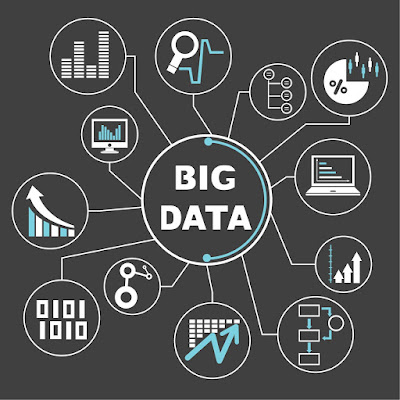Big Data:
Big data describes a holistic information management strategy
that includes and integrates many new types of data and data management
alongside traditional data.
Four V’s of Big Data
Volume:
The amount of data. While volume indicates more data, it is
the granular nature of the data that is unique. Big data requires processing
high volumes of low-density, unstructured Hadoop data—that is, data of unknown
value, such as,
Twitter data feeds, click streams on a web page and a mobile
app, network traffic, sensor-enabled equipment capturing data at the speed of
light, and many more.
It is the task of big data to convert such Hadoop data
into valuable information. For some organizations, this might be tens of
terabytes, for others it may be hundreds of petabytes.
Velocity:
The fast rate at which data is received and perhaps acted
upon. The highest velocity data normally streams directly into memory versus
being written to disk.
IOT
Some Internet of Things (IoT) applications have health
and safety ramifications that require real-time evaluation and action. Other
internet-enabled smart products operate in real time or near real time.
For
example, consumer eCommerce applications seek to combine mobile device location
and personal preferences to make time-sensitive marketing offers.
Operationally, mobile application experiences have large user populations,
increased network traffic, and the expectation for immediate response.
Variety:
New unstructured data types. Unstructured and semi-structured
data types, such as text, audio, and video require additional processing to
both derive meaning and the supporting metadata.
Once understood, unstructured
data has many of the same requirements as structured data, such as
summarization, lineage, auditability, and privacy.
Further complexity arises
when data from a known source changes without notice. Frequent or real-time
schema changes are an enormous burden for both transaction and analytical
environments.
Value:
Data has intrinsic value—but it must be discovered. There are
a range of quantitative and investigative techniques to derive value from
data—from discovering a consumer preference or sentiment, to making a relevant
offer by location, or for identifying a piece of equipment that is about to
fail.
The technological breakthrough is that the cost of data storage and
compute has exponentially decreased, thus providing an abundance of data from
which statistical analysis on the entire data set versus previously only
sample.
The technological breakthrough makes much more accurate and precise
decisions possible. However, finding value also requires new discovery
processes involving clever and insightful analysts, business users, and
executives.
The real big data challenge is a human one, which is learning to
ask the right questions, recognizing patterns, making informed assumptions, and
predicting behavior.
Learn more: Hadoop Training in Chennai
Resources:
Tagged with:
Hadoop Database | Hadoop Big Data | What is Hadoop | Hadoop
Definition | Hadoop tutorial | Hadoop meaning | Big Data Hadoop tutorial | What
is Hadoop technology | Big Data Hadoop Certification | Big Data Hadoop Training
| Big Data Hadoop Pdf



No comments:
Post a Comment